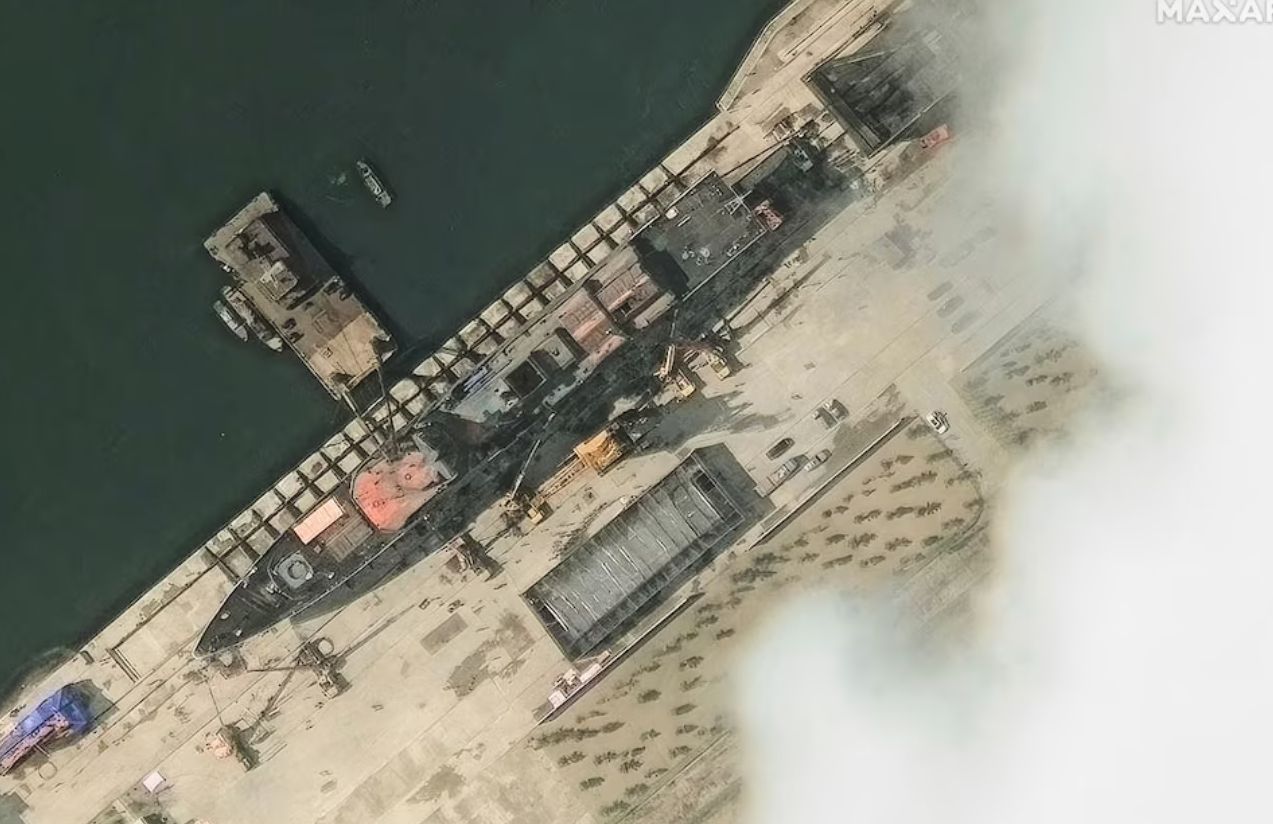North Korea has arrested four officials following the botched launch of a 5,000-ton destroyer at the port of Chongjin, an incident that triggered the ire of leader Kim Jong-un, who called it a “criminal act” caused by “negligence, irresponsibility, and unscientific empiricism,” according to state media reports on Monday.
The accident occurred last Wednesday during an official ceremony attended by Kim himself. Satellite imagery showed the vessel listing to one side, partially submerged and covered with blue tarps, after a transportation trolley at the stern detached prematurely.
Among those detained is Ri Hyong Son, deputy director of the Munitions Industry Department of the Central Committee of the Workers’ Party, who admitted to bearing “significant responsibility” for the failed launch. He was joined by the chief engineer, the head of the hull construction workshop, and the deputy manager of administrative affairs at the Chongjin Shipyard. Additionally, the shipyard’s general manager, Hong Kil Ho, has been summoned for questioning. Authorities have not yet disclosed what penalties the detainees may face.
“The responsibility for this crime cannot be evaded,” the Central Military Commission declared in a directive to investigators, according to official coverage.
Such public punishments for failures in military trials or weapons showcases are rare in North Korea, suggesting that the regime considers the naval project a strategic priority. Defense analysts believe the destroyer was the second of its kind and part of Kim Jong-un’s broader push to modernize the military—particularly the navy.
Last month, North Korea unveiled its first 5,000-ton destroyer with great fanfare, hailing it as the largest and most technologically advanced vessel in its fleet, reportedly capable of carrying “multiple strike weapons,” including nuclear missiles. Kim hailed it at the time as “a significant leap forward” in naval modernization.
In contrast, the regime has sought to downplay the latest incident. According to official statements, the destroyer suffered only scratches on its starboard side and a limited intake of water at the stern. Authorities claim repairs will take about ten days. However, external analysts are skeptical, suspecting the damage may be far more serious than admitted.
Kim’s ambitious arms development plan—approved during a 2021 Workers’ Party Congress—includes expanding the navy, developing nuclear-capable missiles, and strengthening the country’s conventional arsenal. According to Kim, these efforts are meant to counter “growing security threats led by the United States.”
The regime’s harsh response this time contrasts with past moments of leniency. After a failed attempt to launch a spy satellite in 2023, Kim voiced support for the engineers, stating that “failure is always a prerequisite for success.” This time, however, his direct presence at the ceremony and the symbolic value of the destroyer appear to have intensified his reaction.
The episode also echoes the purges that marked the early years of Kim’s rule. Between 2012 and 2016, the leader eliminated dozens of senior officials, including the execution of his powerful uncle, Jang Song Thaek, in a move to consolidate power. In recent years, such practices had waned, reflecting Kim’s firm grip on authority. But this latest incident suggests the regime may be willing to revive old methods when its strategic goals are at stake.

